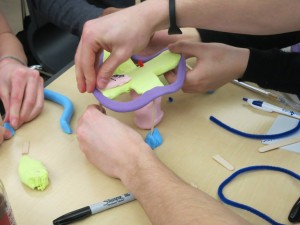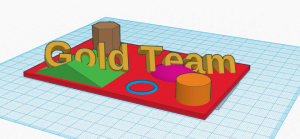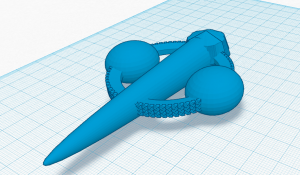Design for America (DFA) visited our class this week for an extensive workshop on how designers get from a problem, to an idea, and to a solution. We implemented the same processes the professionals use, and started out by watching this video:
It’s pretty fascinating. They sniffed out all the problems consumers had with the traditional shopping cart, came up with solutions for each individual problem, and synthesized a good final product that addressed everyone’s concerns. The most interesting thing to me about this video is the actual processes they used: post-it notes and a constant, unabashed flow of ideas.
Our workshop took on pretty much the same format.
– We were given a problem (distracted driving)
– We were given research testimonials (people talking about how distracted driving affected them)
– We went on to do our own research with questioning our classmates
– We came together as a group to share the problems we found, from boredom to the necessity of using a smart phone GPS
– We came up with a slew of solutions, ranking the feasibility and consumer desirability of each solution
– And then we (my group) came up with a product that incorporated the solutions, prototyping and demoing it for the rest of the class (see the picture below for one group’s prototype)
My group had a less photogenic prototype: A sheet of paper representing a windshield that was gamified and interfaced with the driver’s smartphone.
So what?
I never knew the actual processes of design, as I said in my last post, I’m a journalism major and haven’t really done anything with design. Now that I know how the pros do it, I think I have what it takes to come-up with a problem consumers have, and print a solution to that problem.
Looking toward the future, I’ll keep an eye out for problems I run into that could be solved with some ingenuity and layered plastic. I’m still pretty ignorant on the technical skills necessary to model, so I guess my next step is to focus on that while I ideate.




